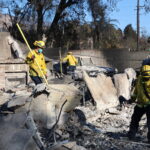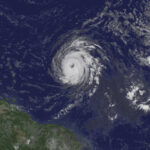Hurricane Beryl ripped through the Caribbean last week, leaving small island governments rushing to find funds for the billions of dollars in damages.
It was the type of situation that Stefano Capodagli is trying to prepare for at the Caribbean Development Bank, one of the biggest lenders to such governments.
He is moving to climate-proof the regional finances in a plan that would add clauses allowing borrowers to pause payments for at least two years after a major disaster, freeing up money for reconstruction. The plan also allows the development bank to delay payments on the borrowing it uses to finance the loans.
Related: CSU Research Team Increases Atlantic Hurricane Forecast
“We are creating resilience to natural disasters in a region that is very much exposed to the impact of major hurricanes as we’ve seen in the Bahamas, Antigua, St. Lucia and Jamaica and in other nations,” the chief risk officer said.
The bank is still developing the plan. In some cases elsewhere, there have been questions about how to measure if a disaster is strong enough to trigger the clauses, even if it wreaks economic havoc.
Governments and multilateral institutions are turning to such mechanisms to ease the financial toll following storms that are becoming more destructive and more frequent. Two Caribbean islands — Barbados and Grenada — included hurricane clauses in bond contracts after they restructured debt. Large lenders like the World Bank have also announced climate-resilient clauses. And the issuance of catastrophe bonds — which pay out if there’s a disaster — hit a record this year.
Related: Economic Loss in U.S. From Beryl Between $28B and $32B, Report Shows
The financial moves are taking on urgency amid rising ocean temperatures and a shift to La Niña conditions, which make it easier for storms to develop. Scientists at Colorado State University predict a hurricane season that’s significantly more active than the historical average, with 25 named storms and six major hurricanes. Beryl, the earliest category 5 storm on record, caused as much as $1.5 billion of damages in the smaller Windwards Islands before hitting Jamaica, the Cayman Islands, Mexico and the US, according to an analysis by CoreLogic.
Boosting Loan Portfolio
The Caribbean Development Bank will roll out the structure of its plan next year and gradually implement the clauses later in the year.
“Climate change is a very relevant threat to our members so this is a priority,” Capodagli said.
The bank intends to tap the international bond market to sell as much as $300 million, probably next year. Existing dollar bonds due in 2027 trade for around 98 cents on the dollar.
It also wants to increase its $1.5 billion loan portfolio and is in discussions with governments to raise more shareholder capital. While its portfolio is relatively small, Capodagli said its loans play a vital role in the finances of many of its 19 borrowing members, which include places such as Haiti and Montserrat.
“We are talking about small islands with limited capacity for borrowing, so for some of these countries that don’t even have a rating, our contribution is key and crucial to their budgets,” he said.
Top photo: People clean up after Hurricane Beryl passed through the area in Old Harbor, Jamaica on July 4.
Was this article valuable?
Here are more articles you may enjoy.


 Alibaba Teams up With BMW to Develop AI for Cars in China
Alibaba Teams up With BMW to Develop AI for Cars in China  New Fire Maps Put Nearly 4M Californians in Hazardous Zones
New Fire Maps Put Nearly 4M Californians in Hazardous Zones  Deutsche Bank, Mudrick Sue Ambac Over $65 Million Transfer
Deutsche Bank, Mudrick Sue Ambac Over $65 Million Transfer  An Unusually Active Hurricane Season Is in Store for the Atlantic
An Unusually Active Hurricane Season Is in Store for the Atlantic 